*This post may contain affiliate links. Read more »
While some people make this using plain rice and no seasonings, my Lontong recipe is made by cooking jasmine rice with fragrant pandan leaves, aromatic lemongrass, and a dash of salt, infusing each grain with the bold, irresistible flavors of Southeast Asia. The cooked rice is then packed into banana leaves, creating compact, flavor-filled parcels that are simmered once again in hot water until they reach the perfect consistency.
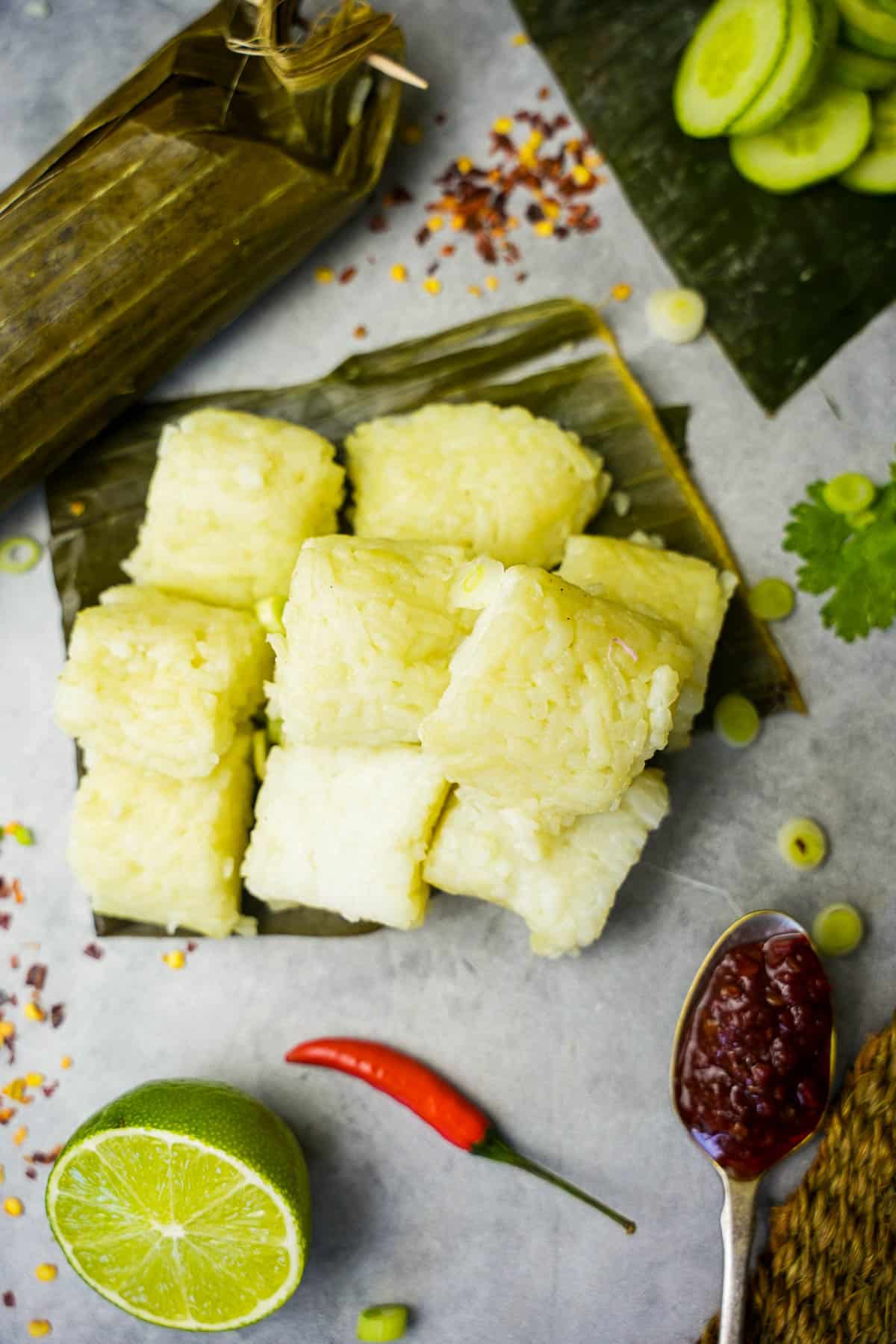

Enter your email & I'll send it to your inbox. Plus, get great new recipes from me every week!
By submitting this form, you consent to receive emails from Cinnamon Snail.
The result is a delightful, compressed rice cake bursting with the exquisite flavors of pandan, and lemongrass, and made just slightly green on the outside from the oils of the banana leaves.
Enjoy fresh homemade lontong sliced in sayur lodeh, on mie goreng or bami goreng. It’s even awesome served alongside dishes from other Southeast Asian countries like ensaladang talong, or tofu sisig from the Philippines.
So join me on this culinary adventure, as we explore the art of making Lontong from scratch. With a few simple ingredients and a traditional Southeast Asian cooking method, you, too can create this timeless classic that will elevate your Malaysian and Indonesian dishes. Are you ready to take your taste buds on a journey they'll never forget? Darn tootin' you are. Let’s get started!
Jump to:
🥰Why you'll adore this rice cakes recipe
😮 More Flavorful and Fragrant: With a combination of pandan leaves, lemongrass, and jasmine rice, this recipe is infused with more flavor and aroma than most lontong recipes that use nothing but boring old white rice.
✌️ Easy to Make: This lontong recipe is super-simple and easy to follow, even if you suck at cooking.
👉Accessible to everyone: Like all of my vegan Indonesian recipes, this recipe is made without animal-based ingredients, and it's also. a gluten-free vegan recipe, that even your wild ol' mommy will love the heck out of.
✅Tested and Approved Worldwide: Like all of the vegan recipes on my blog, this lontong recipe has been meticulously fine-tuned, not only by me, but by a team of hundreds of recipe testers around the world, including in Indonesia where the dish is from.


Warning: This Will Transform Your Vegan Indo Cooking!
This 6-day plant-based deep dive into the vibrant cuisine of Indonesia is 100% FREE.
🍃 Indonesian rice cake ingredients
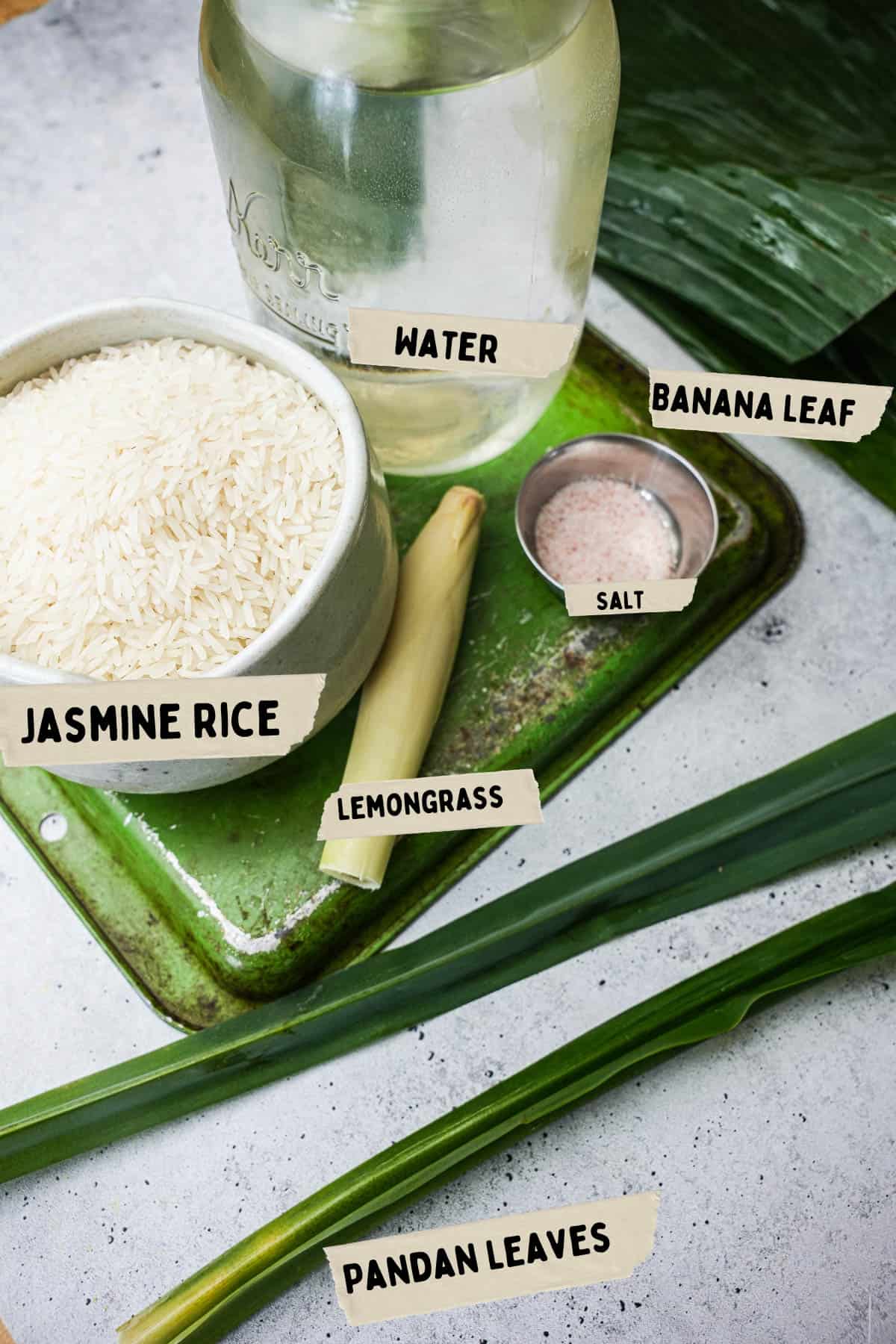
Jasmine Rice
(Nasi Wangi): This aromatic rice is commonly used in Southeast Asian cuisine and has a fragrant, floral aroma. Any long-grain white rice can be substituted if Jasmine rice is not available. Aged basmati is a good substitute because it is also fragrant.
Pandan Leaves
(Daun Pandan): These fragrant leaves are commonly used in Southeast Asian cooking to add a sweet, vanilla-like flavor and aroma to dishes (like kuih dadar and nasi uduk betawi). If fresh pandan leaves are not available, a good quality, natural pandan extract can be used as a substitute.
Lemongrass
(Sereh): This herb has a citrusy, lemony flavor and is commonly used in Southeast Asian cuisine to add a zesty kick to dishes. If fresh lemongrass is not available, you can substitute it with dried lemongrass or lemon zest.
Banana Leaf
(Daun Pisang): This large, sturdy leaf is commonly used in Southeast Asian cooking to wrap food for steaming. It imparts a subtle, sweet flavor, and pretty green color to the steamed rice cakes. If you can’t find banana leaves, soaked corn husks (like what you might use for making tamales) aluminum foil with a layer of parchment inside of it can be used. Some people even make this dish using plastic, but I hate wasting plastic and am not a big fan of cooking directly in contact with it either.
See the recipe card at the bottom of this page for the complete list of ingredients and their quantities.
🤯Variations
Here are a few traditional and untraditional variations you can mess around with:
Lontong Sayur (Coconut milk lontong):
Some traditional Lontong recipes call for coconut milk as the liquid to initially cook the rice in. If you like, you can make my recipe for nasi uduk, and once it is cool, wrap it into the banana leaves and continue to cook as directed in this recipe.
How to make lontong more intensely flavorful:
Instead of using water for cooking the rice, you can substitute vegetable broth, or water with a spoonful of bumbu bali mixed in to add extra flavor and nutrition to the dish.
Char-grilled Indonesian rice cake with chili sauce:
Once steamed, very lightly oil the lontong and grill them on an outdoor grill until there are char marks all over the outside. Unwrapped, it's absolutely delicious with chili garlic sauce, sriracha, or homemade sambal oelek.
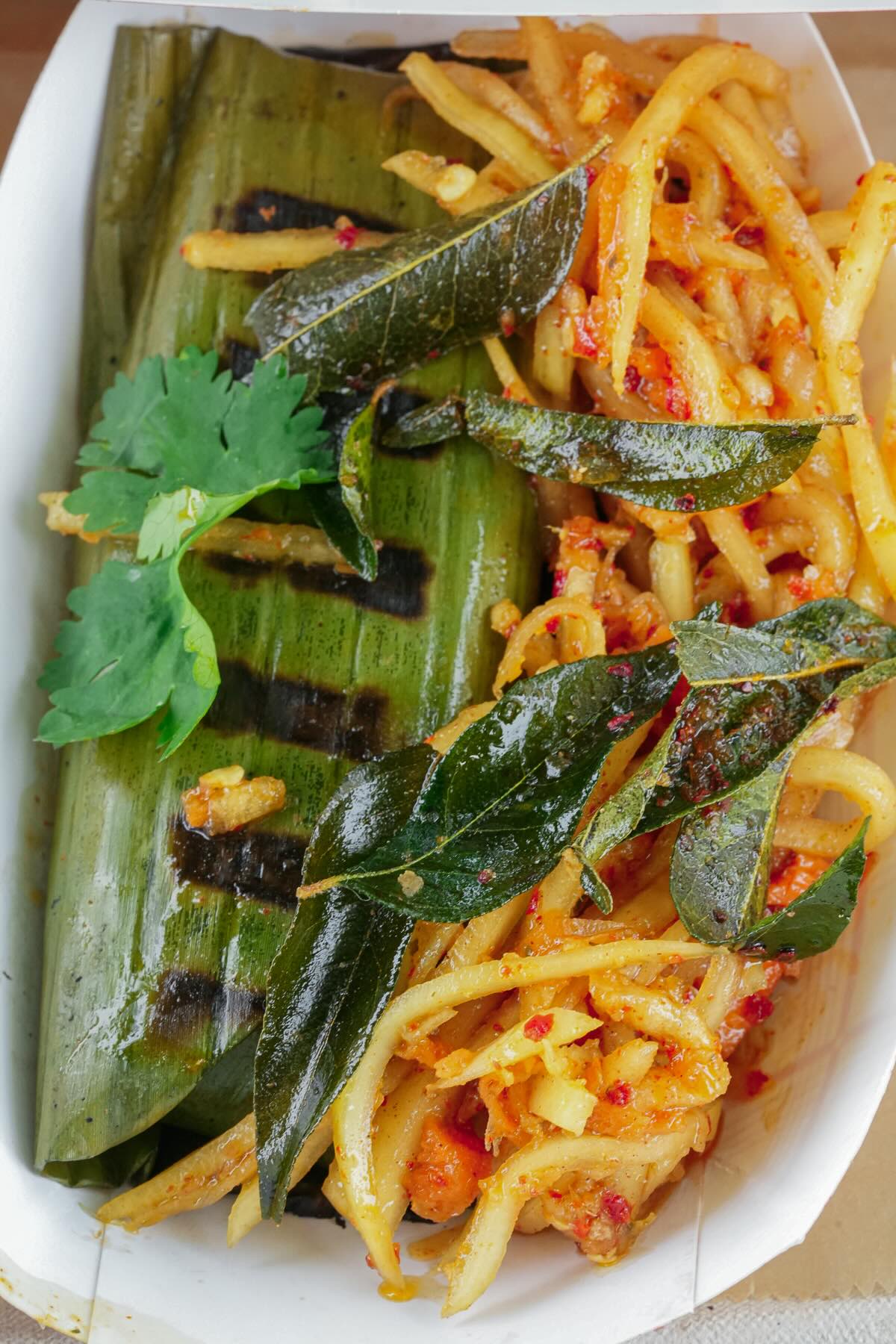
📖 How to make lontong rice
You wanna see how these fragrant Indonesian rice cakes get made? I will walk you through the whole process. Or you can follow along with the easy-to-print recipe card towards the bottom of this page.
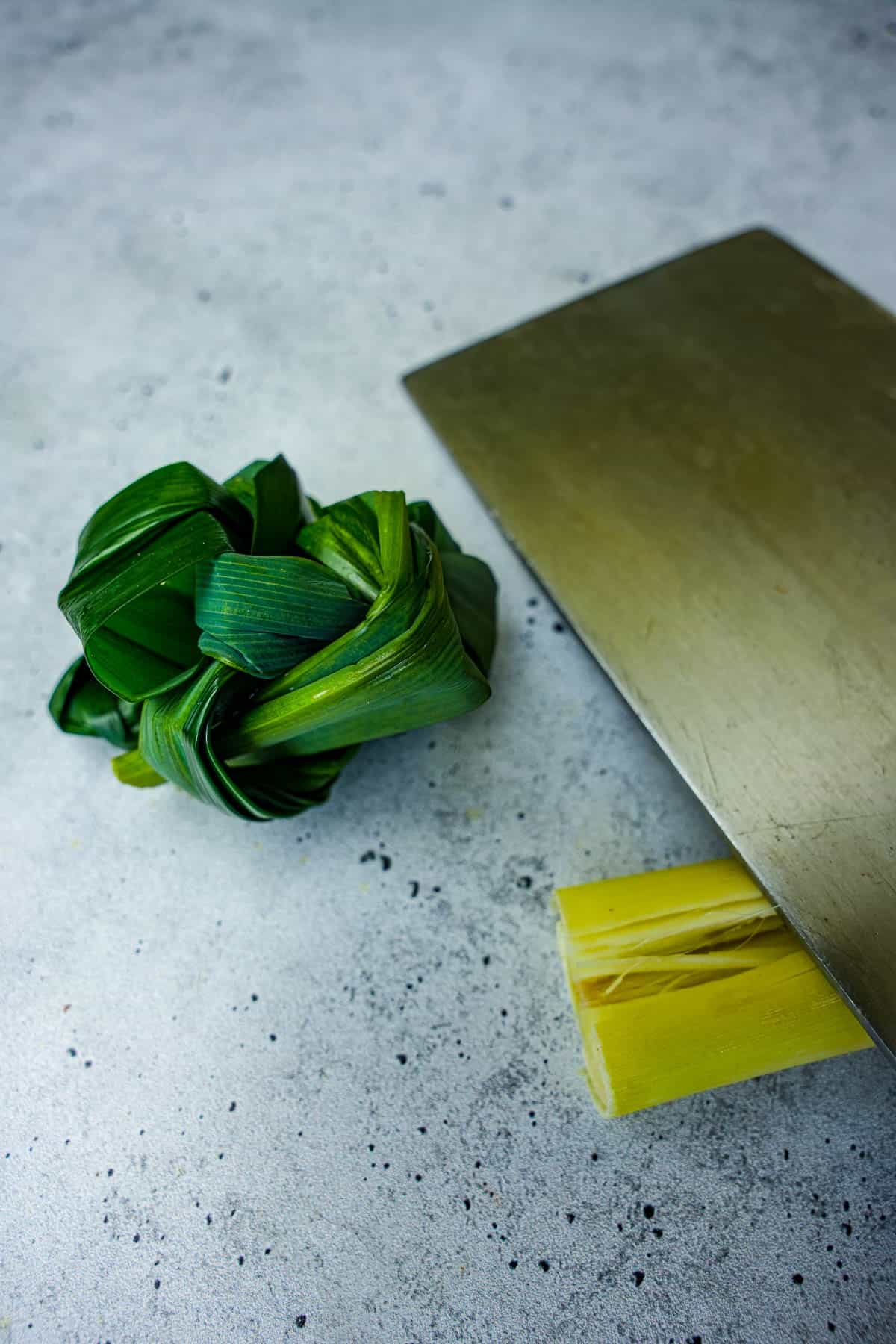
Step 1
Prepare the pandan leaves and lemongrass by tying the pandan into a knot and smashing the lemongrass using a thick knife or meat tenderizer. This will help release their flavor into the rice when cooked.
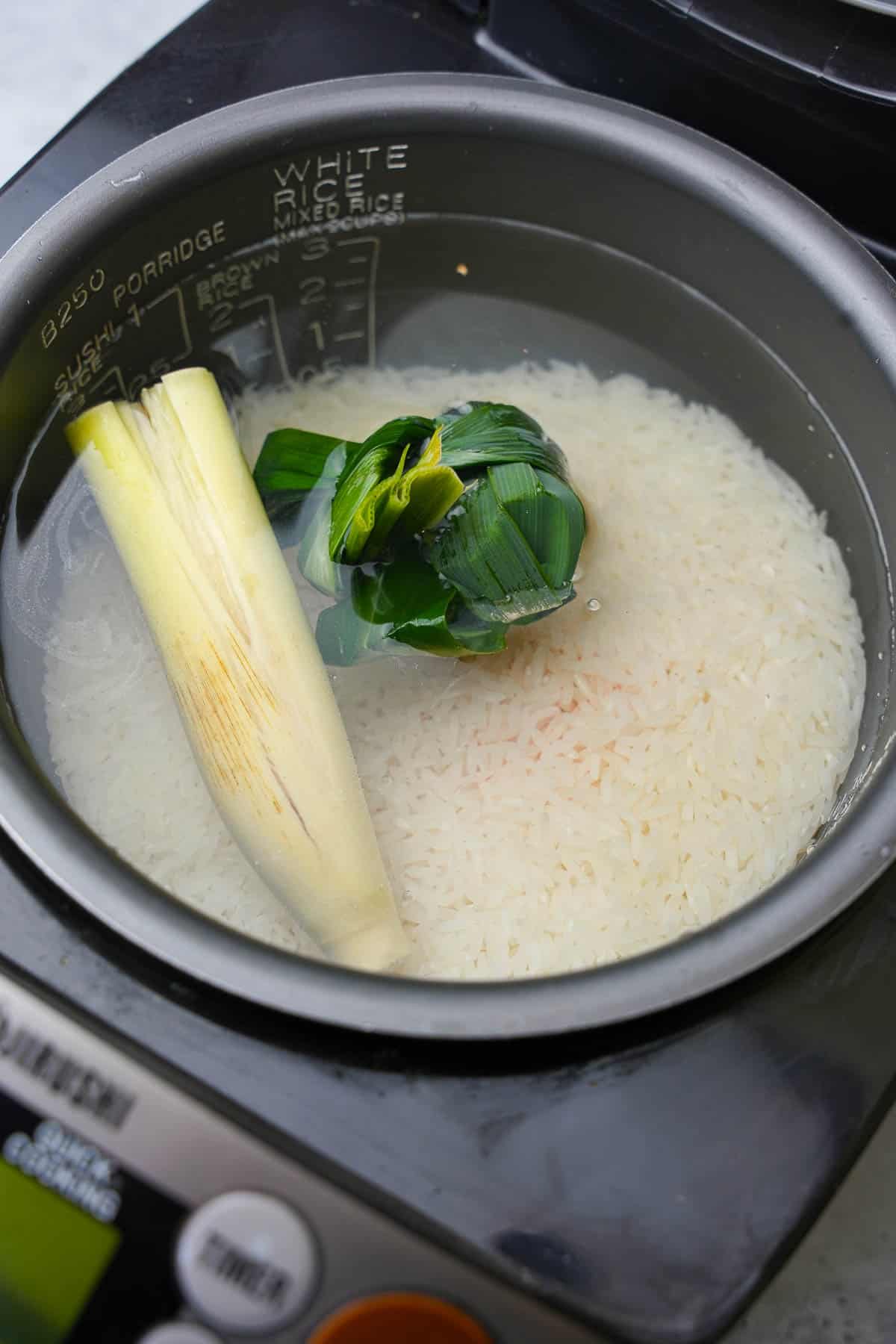
Rice cooker method
You can cook the rice using a rice cooker if you prefer using the white rice setting.
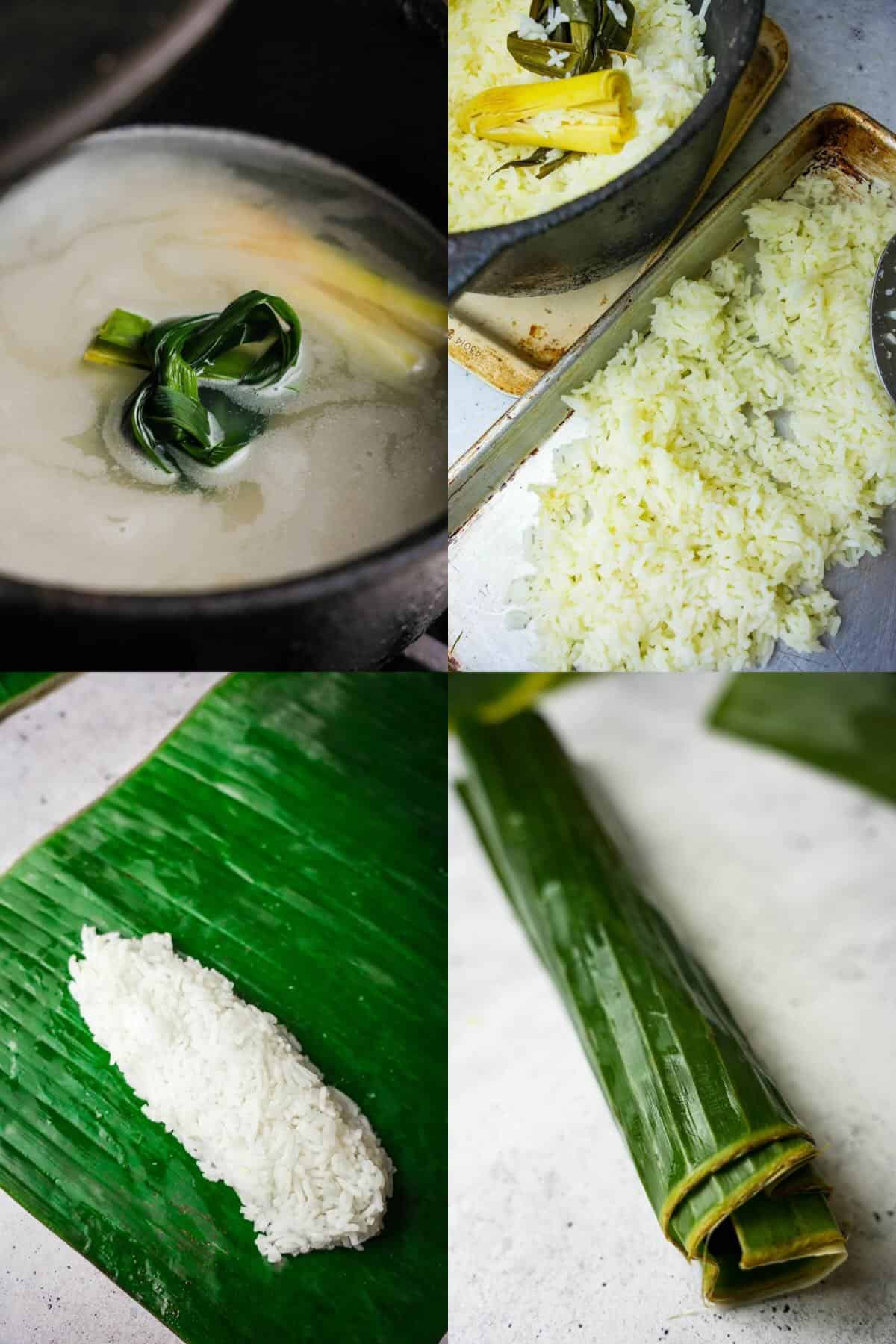
Step 2
If not using a rice cooker, in a pot, bring the water, pandan leaves, lemongrass, and salt to a boil over medium-high heat.
Stir in the jasmine rice, ensuring it is fully submerged in the boiling water. Reduce the heat to low and cover the pot with a lid. Let the rice simmer for 15-20 minutes, or until it is fully cooked and the water has been absorbed.
Step 3
Once cooked, remove the pandan leaves and lemongrass and let the rice cool for at least 20 minutes to make it easier to handle. I like to spread it out on a metal tray and toss it in my fridge or freezer to speed up the cooling.
Step 4
Cut the banana leaves into six equal pieces, each about 8 inches by 14 inches (about 20 x 10 cm.). Rinse them with hot water to bring the oils to the surface and make them pliable, then pat them dry with a towel.
Lay one piece of banana leaf flat on a surface, with the shiny side facing up if you want more green coloring on your rice cakes, or facing down if you want less. Place a scoop of cooked rice, about ½ cup, in the center of the leaf.
Step 5
Roll the leaf tightly around the rice filling with the ends open at first.
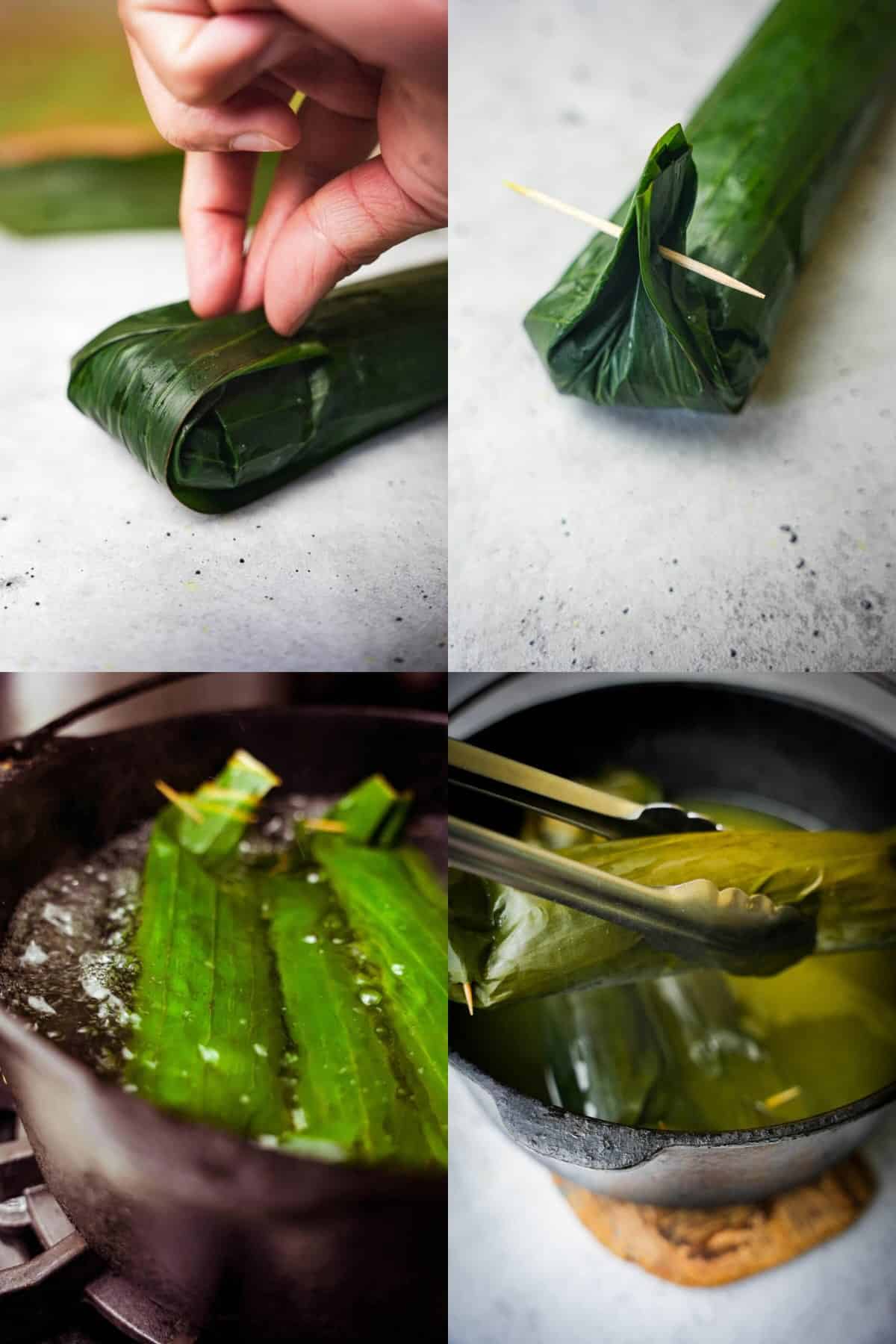
Step 6
Fold the sides inwards to create a tightly sealed package. It is important water does not get into the parcel while it cooks, and there is no room for the rice to expand.
Step 7
Pinch the corners inwards to prevent the folded ends from unfurling. Secure the package with twine or toothpicks. Repeat this process with the remaining banana leaves and cooked rice.
Step 8
Bring a large pot of water to a boil. Add the wrapped rice packages, ensuring they are fully submerged in the water. Let them cook for one hour.
Step 9
Remove the Lontong from the pot and allow them to cool in the refrigerator for at least 90 minutes before unwrapping. This will help them solidify fully.
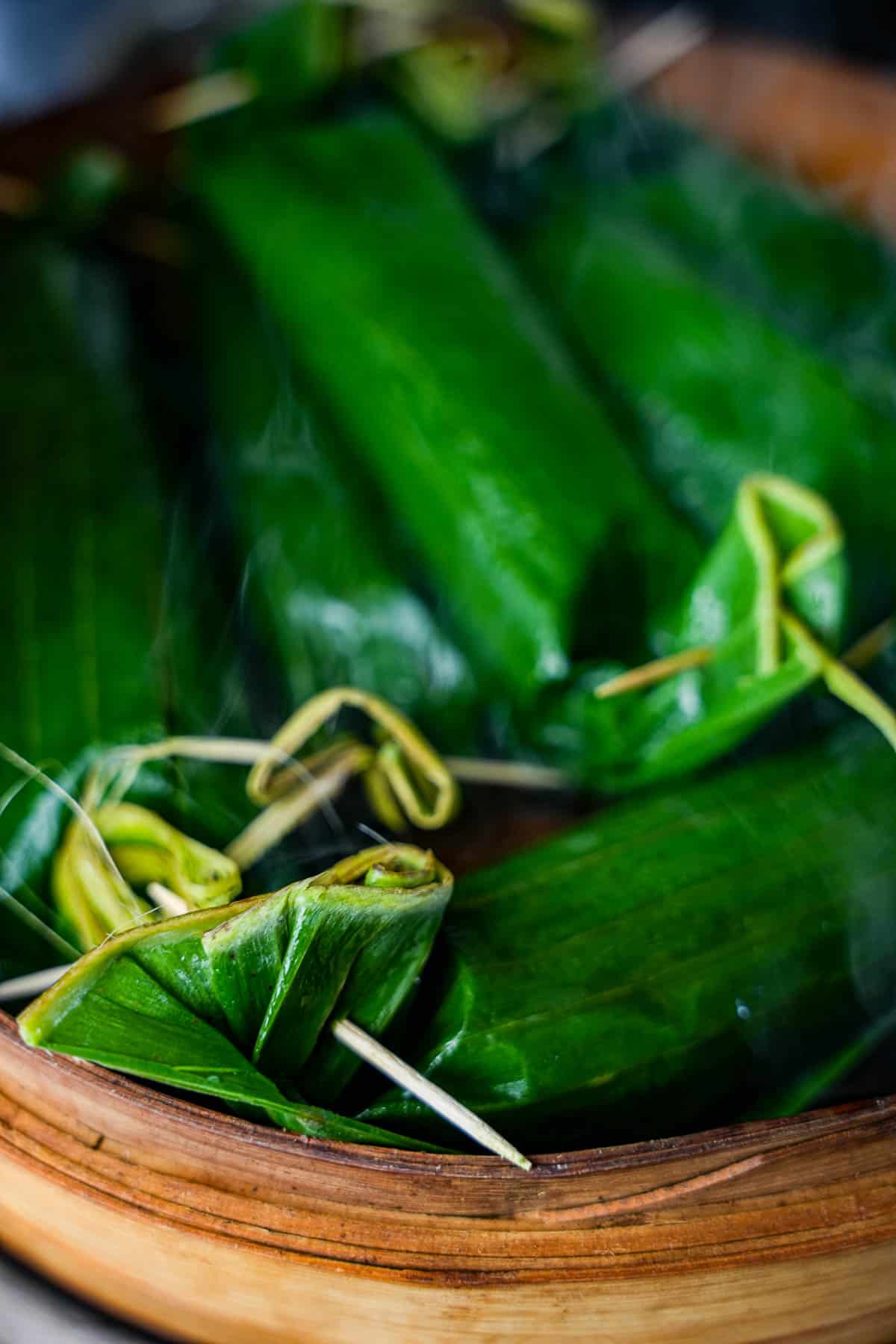
Steamer method
Alternatively, you can cook the parcels in a steamer over medium heat for 90 minutes. There is no opportunity for the lontong to become waterlogged and soggy, however often the rice will not merge fully into a totally solid form.

Step 10
Slice the Lontong with a sharp knife and serve with your favorite side dishes like sambal goreng kentang, and rujak serut!
💡 Serving Ideas
Noodle pal: Serve lontong over your favy Asian noodles such as Mee Rebus, Mi Xao Xi Dau, Burmese Khao Suey, or Pad woon sen.
🥞Think about serving martabak manis, thick Indonesian pancakes stuffed with chocolate and peanuts for dessert! If you want something lighter, check out these easy, healthy recipes for Che Ba, kuih dadar, and Banh Flan.
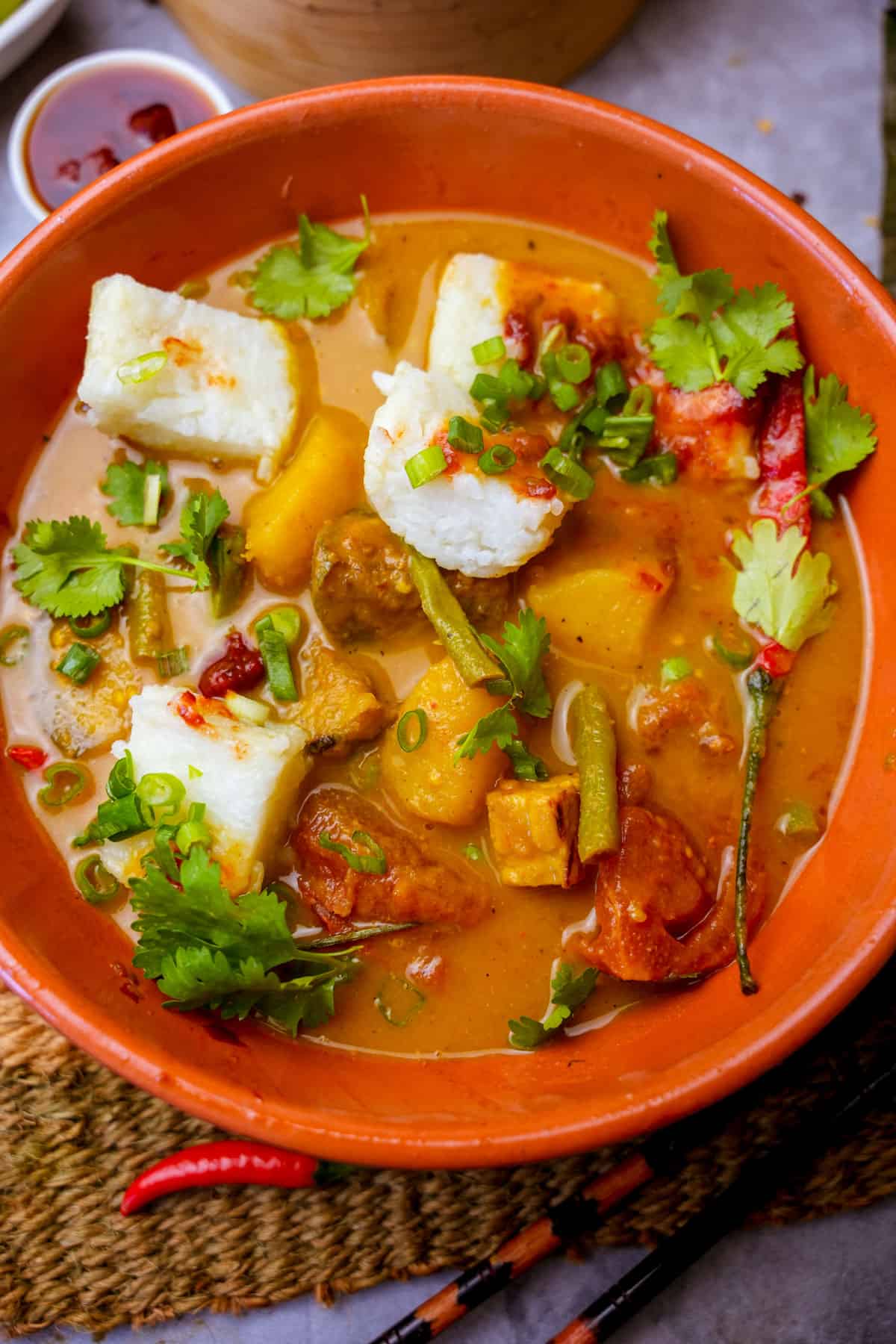
👉Tips for perfect lontong every time
- Don’t worry, you can’t overcook the rice in the first cooking stage! Remember, the rice will continue to cook when you are steaming or boiling the wrapped longings. If the rice is slightly over or undercooked when you form it into the banana leaves, not won’t be a problem as long as you can still press the cooked handfuls of rice into a sausage-like shape.
- It is important to fully cool the Lontong in the refrigerator before unwrapping them to ensure they hold their shape.
- You can use leftover plain rice to make lontong! Simply mix in any desired aromatics, and wrap and steam.
🤷♀️ Compressed Rice Cakes FAQs
Lontong can be stored in the bana leaves in an airtight container in the refrigerator for up to four days. It is also possible to freeze it for up to three months. However, it's important to note that the texture of the lontong may change after being refrigerated or frozen. When reheating, it's best to steam or microwave the lontong to maintain its texture.
Yes, lontong is typically a fat-free dish. It's made from compressed rice cake, often served in slices or cubes. The cooking process involves boiling or steaming the rice without the addition of fats. It's a good option if you're looking for a low-fat meal.
Yes, lontong is typically gluten-free as it is made from rice. However, it's essential if you are eating them out to check for any added ingredients that may contain gluten, such as soy sauce or kecap manis, which are common in Indonesian restaurant cooking.
Lontong is made by tightly packing rice into banana leaves and steaming it until it becomes firm and sliceable. Once cooled, the result is compressed rice cakes with a clean, subtle flavor and dense texture. These rice lontong logs are often cut into rounds and served with saucy Indonesian dishes like sayur lodeh or sambal goreng. It’s kinda like ketupat—another pressed rice dish—but without the woven palm leaf casing.
Lontong has a mild flavor, with no seasoning added during cooking, just rice, water, and steam. It’s the perfect blank canvas for coconut-rich sauces, chili sambals, or spicy curries. Some people describe the taste as subtly nutty from the banana leaf wrap, but it’s mostly about texture. Think chewy, dense, and deeply satisfying. No sugar, powder, or baking required.
There isn’t a direct Chinese name for lontong, but in some Chinese-speaking communities in Southeast Asia, it might be loosely referred to as a type of compressed rice cake. That said, it’s not the same as Chinese-style glutinous rice cakes or New Year’s ketupat, which have different prep, seasonings, and cultural context. Lontong stands on its own as a staple in Indonesian and Malaysian cuisine.
Lontong Sayur translates to "vegetables with lontong." It usually refers to a dish of soft, cut lontong rounds served in a spiced coconut milk stew with vegetables like chayote, cabbage, or long beans. You’ll often find crunchy toppings and maybe a spoonful of sambal on top. In short? It’s compressed rice cakes in a fragrant, soupy curry situation, a total breakfast goal in Indonesia.
💣 What to serve with compressed rice cakes:
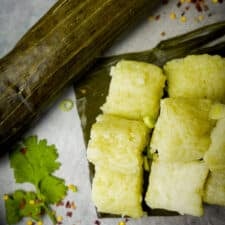
Lontong (Indonesian banana leaf compressed rice cake)
Equipment
Ingredients
- 2 pandan leaves fresh or frozen
- 5 inch about 13 cm. section of fresh lemongrass
- 2 cups jasmine rice
- 3 ½ cups water
- ½ teaspoon salt
- 6 banana leaves 20x35 cm. banana leaf sections
Instructions
- Tie the pandan into a knot, and smash the section of lemongrass using the side of a thick knife or a meat tenderizer to help both herbs release their flavor into the rice when cooked
- In a pot, add the water, pandan leaves, lemongrass, and salt. Bring it to a boil over medium-high heat.
- Add the jasmine rice to the pot, stir well, and reduce the heat to low. Cover the pot with a lid and let it simmer for 15-20 minutes or until the rice is fully cooked and the water has been absorbed. Once cooked, remove the pandan leaves and lemongrass and let the rice cool for at least 20 minutes so that it is easy to handle.
- Cut the banana leaves into three equal-sized pieces, about 8 inches by 14 inches each. Rinse them with very hot water to bring the oils to the surface and make the leaves pliable and pat dry with a clean towel.
- Place one piece of banana leaf on a flat surface, with the shiny side facing up if you want more of the green coloring on your rice cakes, and down if you want less. Add a scoop of cooked rice (about 1 cup) to the center of the leaf. Fold the leaf in half to cover the rice, and then fold the sides inwards to create a sealed package. Secure the package with twine or toothpicks. Repeat this process with the remaining banana leaves and cooked rice. This will make six lontongs.
- In a large pot, bring water to a boil. Add the wrapped rice packages to the pot, making sure they are fully submerged. Let them cook for one hour.
- Remove the Lontong from the pot and let them cool in your refrigerator for at least 90 minutes before unwrapping them. This will help them fully solidify.
- Cut the Lontong into small pieces and serve with your favorite side dishes.
Notes

Enter your email & I'll send it to your inbox. Plus, get great new recipes from me every week!
By submitting this form, you consent to receive emails from Cinnamon Snail.

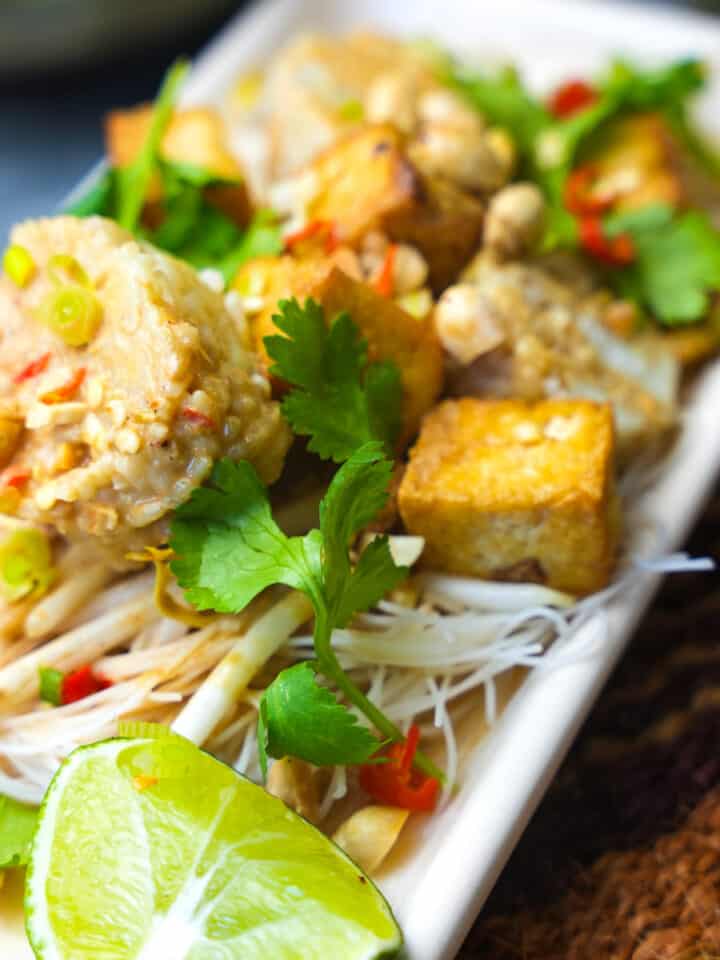

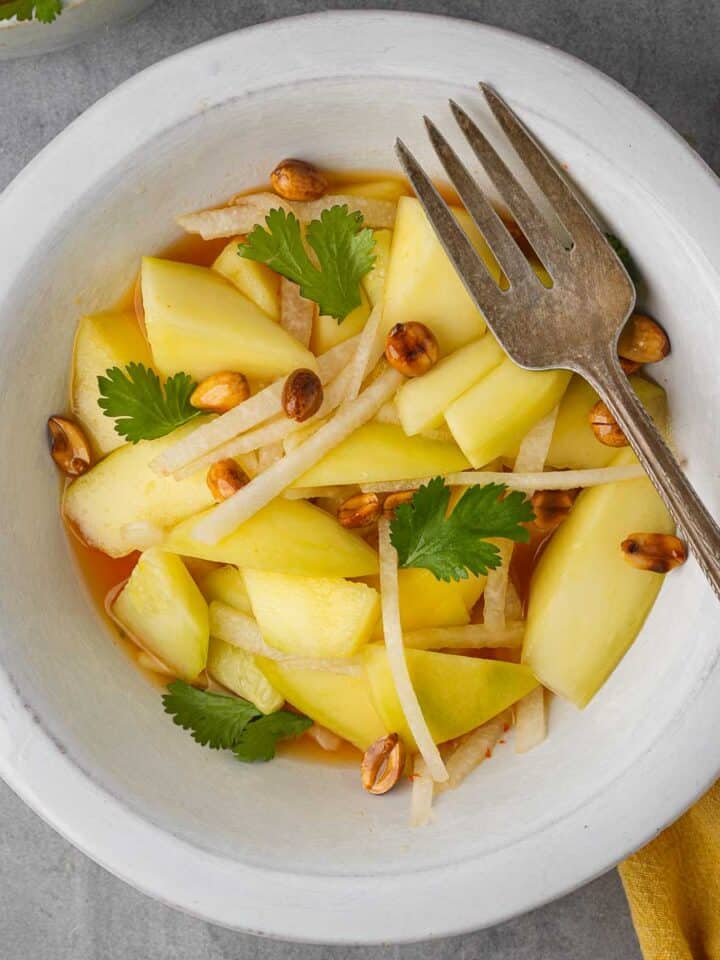
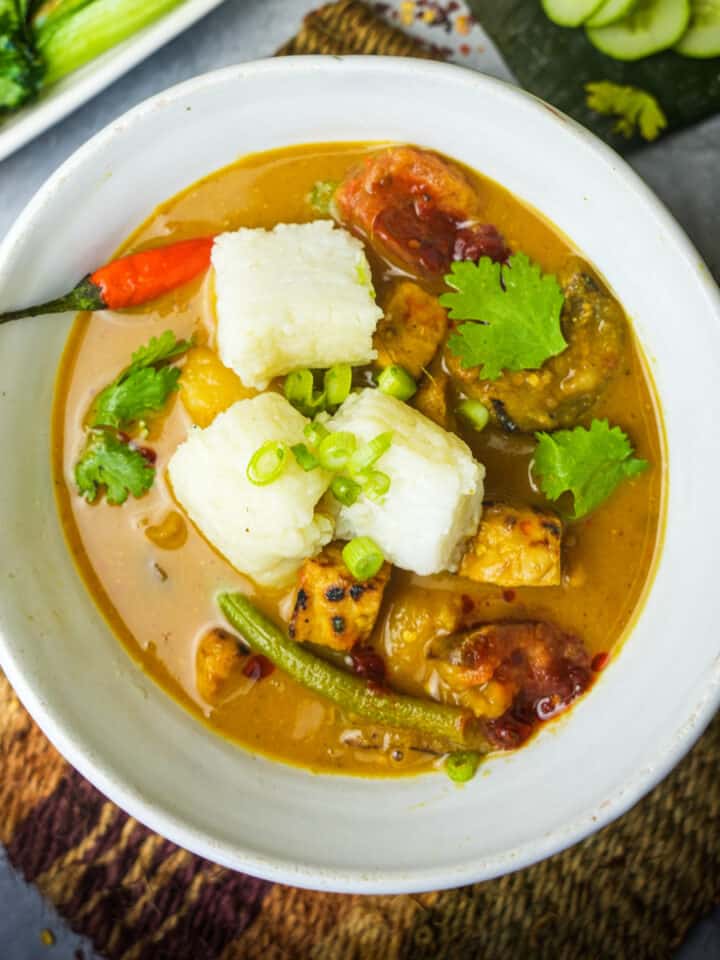




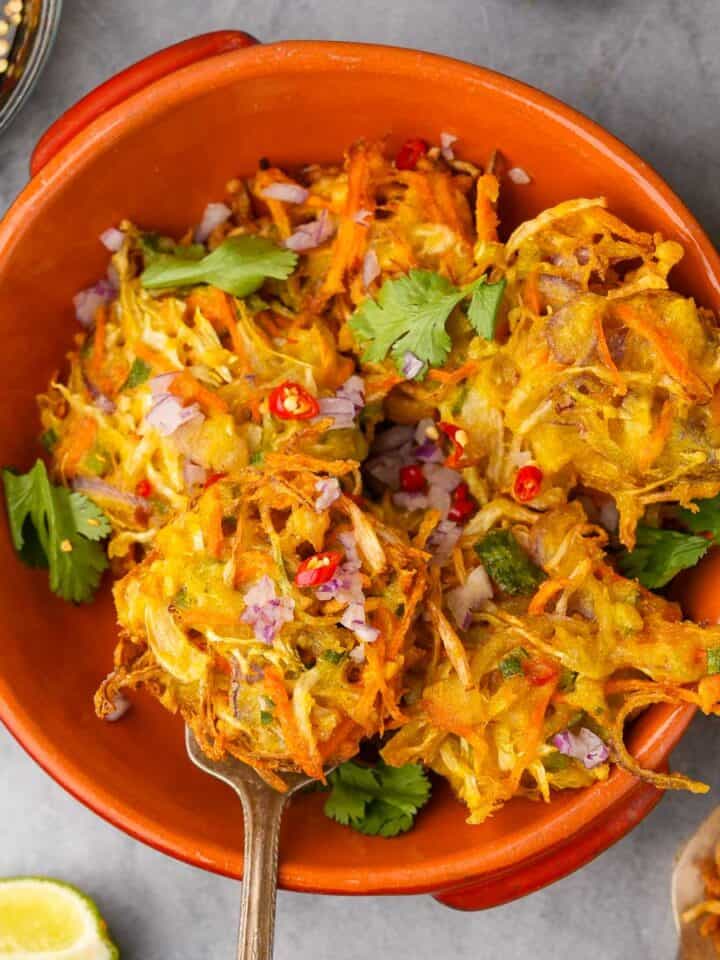
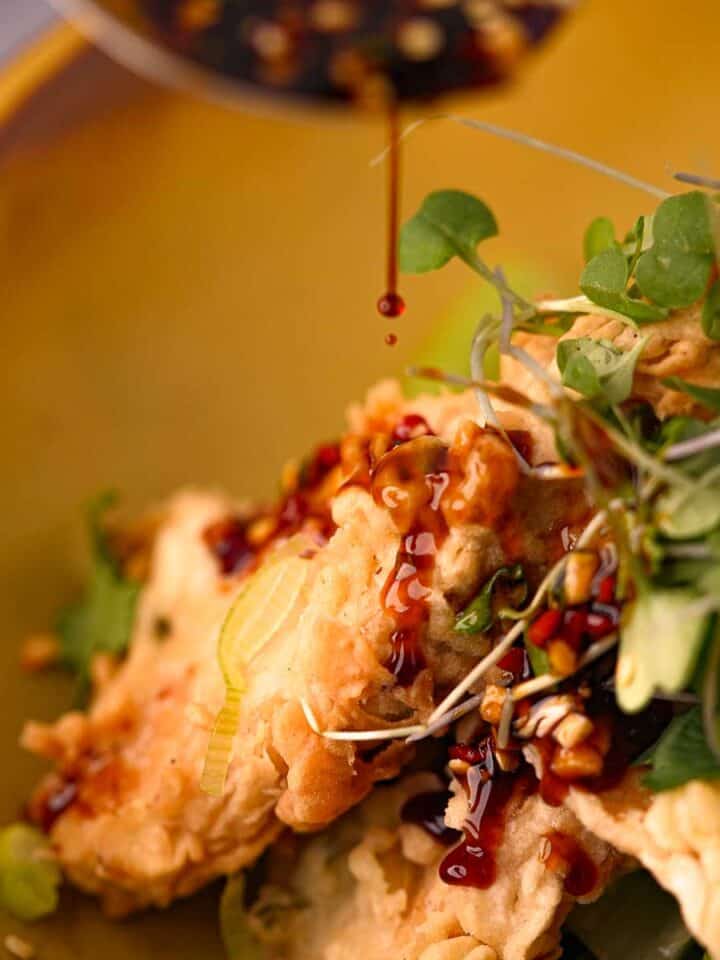
Meg says
This was great. Definitely repeating the experience. Easy and full of flavour. I tasted just after putting coconut milk etc in and thought hmmm but then the flavours came through….thank you yet again Chef Adam.
Gareth Steed says
I live in Indonesia and this is spot on (though we use local rather than jasmine rice). Lovely recipe.
Adam Sobel says
Thanks Gareth! That's quite a compliment coming from a local. Where in Indonesia are you?